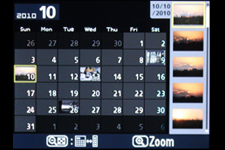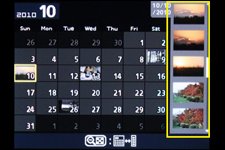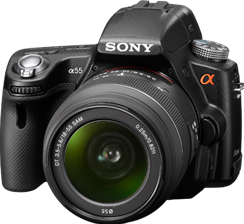Online Magazine
Recent Posts
- Safeguard your Cellphone Photos
- Black & White to Color – Instantly
- Wearing Many Hats
- Video Roundup
- Rescuing Your Blurry Pictures
- Showing Their Age
- What is Your Angle?
- Panorama Photos
- Humorous Photos
- Close Ups
- Fisheye Pictures
- Photo Antiquities
- Printing Big
- Appreciating Scale
- Celebrity Sightings
Tags
More Places to Go
- Free "How-To" Books “How To” books for popular cameras 0
- Vist Us on Facebook keep in touch with us on Facebook 2
Archives
- July 2023 (1)
- March 2023 (2)
- February 2023 (1)
- December 2022 (1)
- October 2022 (1)
- September 2022 (8)
- August 2022 (9)
- July 2022 (1)
- June 2022 (1)
- June 2021 (1)
- May 2021 (1)
- March 2021 (5)
- February 2021 (4)
- January 2021 (2)
- April 2019 (1)
- March 2019 (1)
- February 2019 (1)
- October 2018 (2)
- April 2018 (1)
- March 2018 (4)
- February 2018 (1)
- November 2017 (1)
- August 2017 (1)
- June 2017 (1)
- April 2017 (1)
- March 2017 (5)
- February 2017 (2)
- January 2017 (1)
- October 2016 (1)
- September 2016 (1)
- August 2016 (1)
- July 2016 (1)
- May 2016 (1)
- April 2016 (1)
- March 2016 (2)
- February 2016 (1)
- January 2016 (2)
- December 2015 (1)
- November 2015 (1)
- October 2015 (3)
- April 2015 (1)
- March 2015 (5)
- February 2015 (1)
- January 2015 (4)
- December 2014 (2)
- November 2014 (5)
- October 2014 (2)
- September 2014 (1)
- August 2014 (2)
- July 2014 (1)
- May 2014 (1)
- April 2014 (5)
- March 2014 (5)
- December 2013 (2)
- November 2013 (18)
- October 2013 (1)
- September 2013 (1)
- August 2013 (1)
- July 2013 (1)
- June 2013 (3)
- May 2013 (1)
- April 2013 (2)
- March 2013 (1)
- February 2013 (1)
- January 2013 (1)
- December 2012 (1)
- November 2012 (2)
- October 2012 (2)
- September 2012 (5)
- August 2012 (2)
- July 2012 (1)
- June 2012 (1)
- May 2012 (1)
- April 2012 (4)
- March 2012 (1)
- February 2012 (1)
- January 2012 (3)
- December 2011 (1)
- November 2011 (3)
- October 2011 (1)
- September 2011 (2)
- August 2011 (2)
- June 2011 (3)
- May 2011 (4)
- April 2011 (8)
- March 2011 (8)
- February 2011 (10)
- January 2011 (6)
- December 2010 (11)
- November 2010 (14)
- October 2010 (6)
- September 2010 (12)
- August 2010 (2)
- July 2010 (4)
- June 2010 (3)
- May 2010 (1)
- April 2010 (1)
- March 2010 (2)
- February 2010 (1)
- January 2010 (1)
- December 2009 (1)
- November 2009 (2)
- October 2009 (2)
- September 2009 (1)
- August 2009 (3)
- July 2009 (2)
- June 2009 (1)
- May 2009 (2)
- April 2009 (1)
- March 2009 (2)
- February 2009 (1)
- January 2009 (3)
Calendar Playback – Nikon users
11th December 2010
If you’re a user of certain Nikon cameras and want to find a photograph or two from a specific day there is an easy way to do it.
Let’s say you’ve just returned from a photo-filled vacation and want to look for a favorite photo from a specific day of the vacation. You snapped so many photos, however, that previewing all the photos on your camera would not only can take time but battery power as well. One answer is to use the Calendar Playback feature found on certain Nikon cameras such as the D3000 and D5000.
 Nikon’s Calendar Playback is a quick way to find a photofrom a specific day. |
To start, press the PREVIEW button on the back of your camera. (It’s to the top left of the LCD monitor.) This will display a photo you snapped in the LCD monitor. Then press the THUMBNAIL-PLAYBACK-ZOOM OUT button. (It’s to the left of the LCD monitor next to the big question mark (?) symbol.) Press the button until you see a calendar.
Notice the little thumbnails appearing on the dates you took photos. Press the multi selector to select a specific date on the calendar. Press the THUMBNAIL-PLAYBACK-ZOOM OUT button to display thumbnails of the photos corresponding to that date. These thumbnails will appear on the right side of the LCD monitor (highlighted in yellow in the following photo). Press the up or down multi selector to select the photo you want to preview. Then press the OK button to preview the picture in the LCD monitor.
 Thumbnails of the photos corresponding to the date on the calendar |
Press the PREVIEW button again if the LCD monitor goes blank.
This is a simple and quick way of finding a photo from a certain date while the memory card is still in the camera.
Written by Scott Slaughter
Portrait Tip # 3
10th December 2010
Portraits are one the most common type of photographs. We’d like to share some tips for taking better people pictures.
I think you’ll be rewarded if you are patient and wait for the subject’s eyes to meet the lens.
A complimentary tip – long ago my mentor taught me that before pressing the shutter button, I should make sure that the lens was carefully focused on the eyes. This has been remained essential words of advice since.
Written by: Arnie Lee
On the Equipment Horizon
06th December 2010
At the PhotoPlus Expo this past September I stopped by the Sony booth. Having received pre-show information, I wanted to try their pair of new cameras – the Alpha A33 and A55. While both look and function like DSLRs, a more appropriate term might be DVF – Digital ViewFinder – since neither uses a reflex mirror. Instead, they sport a fixed translucent “mirror” that sends a small portion of the incoming image to the viewfinder and the remainder to the “film” light sensor.
This technology isn’t new. In the early 1960’s Canon made a model called the Pellix using a similar scheme with a pellicle mirror. My uncle bought this camera back then, one of the first to have Through The Lens metering (TTL) and it served him well for many years.
 |
Sony believes that their updated translucent mirror has life in the 21st century. There are several advantages to such an arrangement. First, a static mirror eliminates the reflex mechanism providing a space, weight and cost savings. Removing this mechanical assembly also allows for a higher frame rate. Next, the electronics measuring the auto exposure remain uninterrupted from frame to frame giving instant responses to varying changes in lighting. Similarly, the auto focus system stays 100% available – a very important consideration for high speed continuous shooting. |



